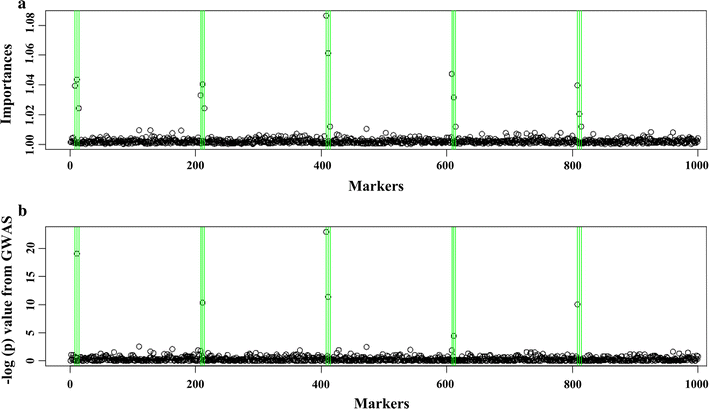Locally epistatic models for genome-wide prediction and association by importance sampling
- PMID: 29041917
- PMCID: PMC5646165
- DOI: 10.1186/s12711-017-0348-8
Locally epistatic models for genome-wide prediction and association by importance sampling
Abstract
Background: In statistical genetics, an important task involves building predictive models of the genotype-phenotype relationship to attribute a proportion of the total phenotypic variance to the variation in genotypes. Many models have been proposed to incorporate additive genetic effects into prediction or association models. Currently, there is a scarcity of models that can adequately account for gene by gene or other forms of genetic interactions, and there is an increased interest in using marker annotations in genome-wide prediction and association analyses. In this paper, we discuss a hybrid modeling method which combines parametric mixed modeling and non-parametric rule ensembles.
Results: This approach gives us a flexible class of models that can be used to capture additive, locally epistatic genetic effects, gene-by-background interactions and allows us to incorporate one or more annotations into the genomic selection or association models. We use benchmark datasets that cover a range of organisms and traits in addition to simulated datasets to illustrate the strengths of this approach.
Conclusions: In this paper, we describe a new strategy for incorporating genetic interactions into genomic prediction and association models. This strategy results in accurate models, with sometimes significantly higher accuracies than that of a standard additive model.
Figures





References
-
- Provine WB. The origins of theoretical population genetics: with a new afterword. Chicago: University of Chicago Press; 2001.
-
- Fisher RA. The correlation between relatives on the supposition of mendelian inheritance. Tran R Soc Edinb. 1918;52:399–433. doi: 10.1017/S0080456800012163. - DOI
Publication types
MeSH terms
LinkOut - more resources
Full Text Sources
Other Literature Sources

